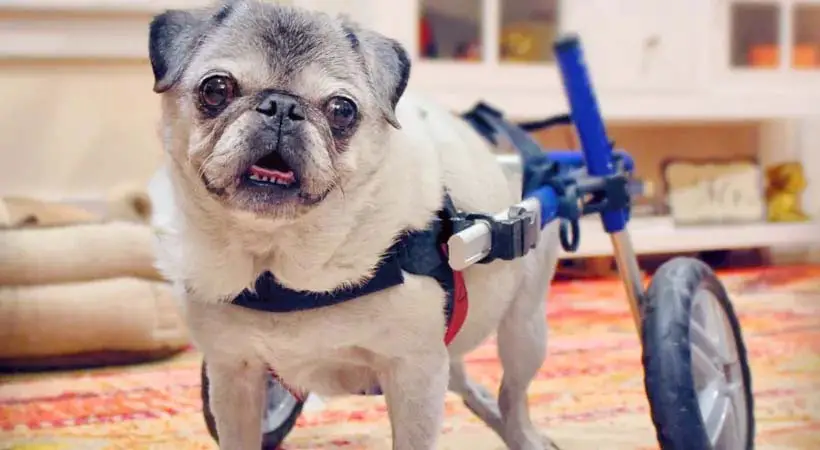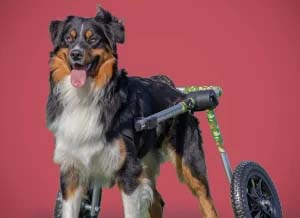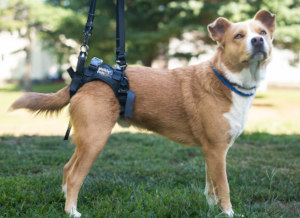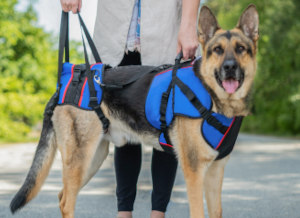Just like humans, pets can experience disabilities. As pet parents, you hate to see your fur babies go through the tough times that come with having a disability. Luckily, you can take action to ensure your pet still thrives, starting with creating a routine.
Before we offer tips for building a better routine with your pet, let’s discuss how routines benefit you and your pet with a disability in more detail.
How Routines Benefit Pets With Disabilities
Routines are fundamental in improving the life of your pet with a disability. They reinforce stability for your pet. The pet can then know what will happen during their days, and that, in turn, makes them much more comfortable.
In addition, routines can better your pet’s mental and physical health. A disability can easily debilitate both. So, having activities in their day that keep them mentally and physically stimulated is helpful.
Lastly, routines help your pets build trust with you. A pet with a disability must be able to lean on their owner for support. They have to know you will be there. A routine lets them know you will be there day in and day out to help them navigate and thrive through their disability.
How Routines Benefit Owners, Too
Routines aren’t solely for the benefit of your pet. There are advantages for you as an owner too. The first of those is building better health habits that support self-care.
Healthy habits like walking daily with your pet, eating healthy meals together, and having positive interactions with other pet parents can improve your mental and physical health. They put you on a path to taking better care of yourself. And as you take better care of yourself, your relationship with your pet and their holistic health improves too.
Also, routines help you stay on top of your pet’s care better. You learn how to organize their vaccinations, preventative care, surgeries, and other healthcare appointments. You build taking their medications into your day, making them second nature. You’re more mindful of their mental and physical health needs too.
Tips for Building a Better Routine With Your Pet
With the benefits of a routine in mind, you’re probably wondering how to create a better one. These tactics will help you do just that.
Consult Your Veterinarian
One of the best things you can do to build a better routine with your pet is to consult your veterinarian. Your vet knows your pet and the details of their disability, so they’re one of the best sources of advice to tap when developing a routine that fits your pet perfectly.
Schedule an appointment with your vet and get these questions answered:
- What should my pet be doing every day?
- When and how often should my pet exercise?
- Where can I take my pet without aggravating their disability?
- How can I get my pet to take their medication without issue?
- Are there any other supplements or vitamins I should add to their regimen?
- Are there any supplies, mobility aids, or protective clothing I should implement?
- Should I add additional training or alternative therapy options to my pet’s routine?
Add any other questions to this list that will help you build a better routine for your pet with a disability.
Make It Fun
Living with a disability is challenging. But that doesn’t mean life and your pet’s routine have to be somber and centered on how hard things are. Instead, make your pet’s routine as fun as possible for them.
Think about what your pet enjoys doing. What kind of toys do they like to play with? Where do they like to go? Do they like interacting with other dogs? Would they rather stay home and explore in the backyard?
Whatever your dog deems enjoyable, add it to their routine. Fun, doable activities will keep your pet’s disability off their mind. It’ll also empower them, showing them that they aren’t as limited as they might think they are.
Write It Down
A routine is only a routine if you do it consistently. Sticking to your routine is the only way you and your pet will reap the full benefits. In addition, you’ll see what’s working and what isn’t and can make productive adjustments.
Digitally documenting or writing down your routine is a great way to ensure you stick with it. You’ll know what activities to do and when with your pet daily, fueling consistency.
How To Change Your Routine When Needed
Life happens. And when life happens, it usually disrupts the routines we’ve set in stone.
For example, many of us have or will deal with pests in our homes. It can get so bad that you have to get pest control treatments. And many of those treatments aren’t good for your pet’s health and wellness. So, you have to remove them from your home to keep them safe during pest control treatments.
If your pet’s routine revolves around activities in the house, you’ll need to make some changes during this time. These two tips can help you change your pet’s routine without compromising consistency and progress.
Choose Similar Activities
You don’t want to get too far away from what your pet is already used to when making changes. Doing so may confuse them and cause them to be unwilling to participate.
If you must change an activity in your pet’s routine, transition to one similar to what they’re used to. For example, if your regular walking path is under construction, choose another one in the same area that somewhat mirrors the other one.
Let’s say you moved and can’t get to the dog park you used to take your pet to. Do your best to find one the same size and with the same structures and support for their disability. Or, if you have to change when your pet takes their medication, still do precisely what you were doing to get them to take their medication at the new time.
Not straying far away from what your pet is used to will help them get accustomed to the changes you’re making faster.
Take It Slow
The last thing you should do is spring a change on your pet. It’s best to take it slow and take small actions that help them get ready for the change.
If you’re moving, take them on a walk in your new neighborhood at least once a week in the months leading up to your move. Add new medication to their regimen in small doses. Give your pet a few sessions to get to know a new therapist before diving into the actual work.
Take it slow and give your pet time to adjust to any changes.
The Bottom Line
Living with a disability can be as difficult for pets as it is for adults. They’ll need help navigating and thriving through their disability. A routine can do that. Create the best one for your pet with the tips above, and you both will reap tremendous benefits.

Guest Author:
Charlie Fletcher
Charlie Fletcher is a freelance writer and pet parent from the lovely “city of trees”- Boise, Idaho. Her love of writing pairs with her passion for animal rights and search for the truth. You can find more of her writing on her Contently.



